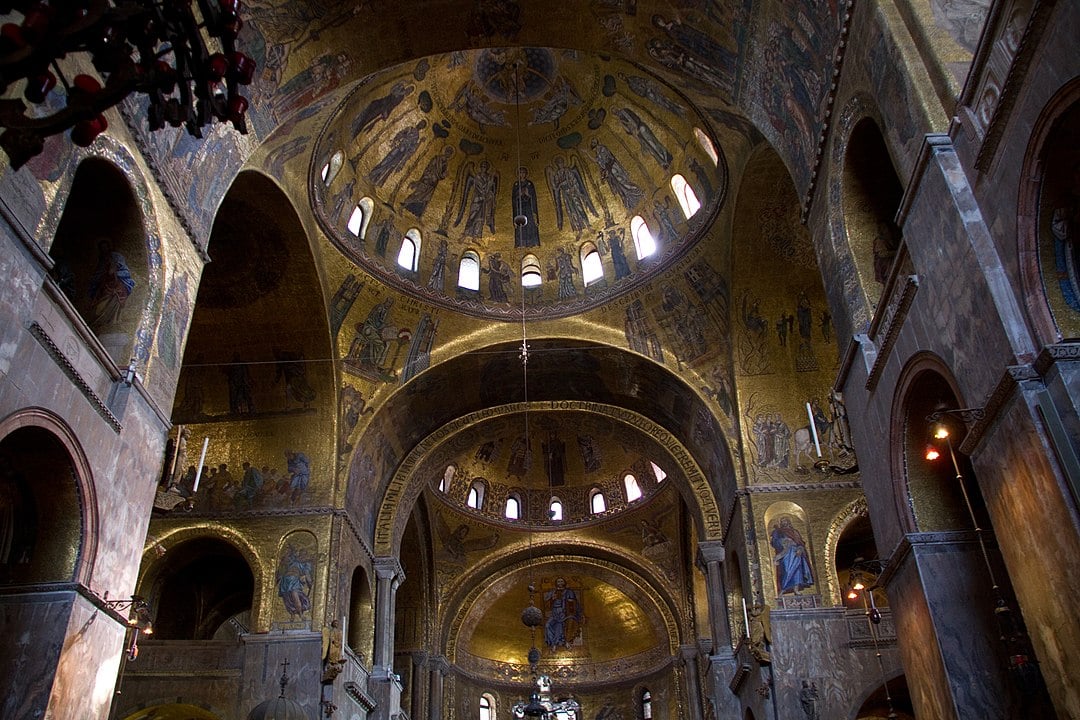

The true location of Alexander the Great’s tomb is considered to be one of the great mysteries of the ancient world. After going missing in antiquity, researchers are still trying hard to find it. One modern theory asserts that Alexander the Great’s real tomb is actually in Venice, at St Mark’s Basilica.
Why is the tomb of Alexander the Great a mystery in the first place? After he died in 323 BCE, Ptolemy stole his body and took it to Memphis, Egypt. That was the site of Alexander’s first burial.
However, Ptolemy’s son then moved Alexander’s body to a different location in Egypt. He had the body buried in Alexandria, which was a fitting location as that city was named after the king himself.
There are several records of important historical figures visiting Alexander the Great’s tomb over the centuries. For a long time, its location was certainly no mystery. However, the last reliable mention of his tomb being visible and recognised in Alexandria comes from the Sophist teacher Libanius, writing in 390.
After this, in about the year 400, John Chrysostom visited Alexandria with the intention of visiting Alexander’s tomb. However, by that time, the tomb was lost.
What happened between 390 and 400 that could have led to the disappearance of the tomb of Alexander the Great?
The obvious answer to this mystery is that it was a result of Theodosius’ decrees regarding the destruction of pagan sites. These decrees were given in c. 390, exactly when Alexander’s tomb is last seen.
Alexander had been worshipped as a god since his death. Therefore, his tomb would certainly have been in danger of destruction at that time. The Christians would surely have viewed it as a pagan site, meaning that it needed to be destroyed.
One possibility is simply that the Christians of that era really did destroy the tomb. However, there is another possibility.
Researcher Andrew Chugg has argued that the Christians of Alexandria desired to protect the tomb of Alexander the Great. To do so, they rebranded it as the tomb of Mark the Evangelist. What is the evidence for this?
In 392, Jerome made reference to a tomb of Mark in Alexandria. It is interesting that this comes from just after Theodosius’ decrees concerning destroying pagan sites, which would have endangered the tomb of Alexander.
Of course, this in itself is not proof that Christians rebranded the tomb of Alexander the Great as the tomb of Mark. The apparent correspondence could easily just be a coincidence. However, there is more evidence in support of this theory than just when Mark’s tomb is first mentioned.
The next part of Andrew Chugg’s theory involves the documented fact that the body of ‘Mark’ was taken from Alexandria to Venice. This occurred in 828, during a time in which the Muslim ruler al-Ma’mun intended to tear down the church in which Mark’s body was held for the construction of new mosques.
Those who took Mark’s supposed body from Alexandria brought it to Venice, where it was then reinterred at the site of what is now St Mark’s Basilica.
The reason that this is so significant is because it means the supposed tomb of Mark is not just something that we can read about in ancient records. Rather, we know exactly where it is, and there is an important artefact associated with it.
Just a few meters away from the original burial site of Mark’s supposed body at St Mark’s Basilica, archaeologists discovered an astonishing artefact. It was a fragment of a stone slab. On this piece of stone, there were carvings of ancient Macedonian iconography.
One of the icons on the slab was a sun symbol which was closely (although not exclusively) associated with Alexander’s family. The type of stone, likewise, is from the Eastern Mediterranean. One scholar dated it to approximately 200 BCE.
Therefore, everything indicates that this stone slab was originally from an ancient Macedonian site of some description. At some point, it arrived in Venice in close association with the supposed tomb of Mark.
Andrew Chugg’s theory goes further. The size and shape of the original slab can be established by a depiction of a spear covering it. The size and shape in question is, according to Chugg, a perfect match for the Sarcophagus of Nectanebo II.
Nectanebo II never did use this sarcophagus, and tradition had long associated it with Alexander the Great. Chugg suggests that this is where Alexandria the Great had been interred originally, and that when his body was smuggled to Venice, the covering of the sarcophagus was brought along as well.
Definitive evidence of this could be established by an examination of the body of ‘Mark’. However, this is unlikely to happen any time soon, due to reluctance on the part of the Catholic Church.
In summary, is Alexander the Great’s tomb actually at St Mark’s Basilica in Venice? We cannot say for sure. Nevertheless, there is a good case to be made for this theory.
